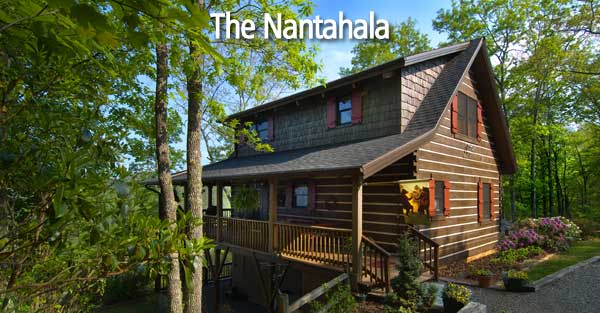
You Can Create Your Dream Home for Less!
It’s a rare these days to hear the phrase “money is no object.” No matter what your net worth, chances are you’re interested in making smart investments—and getting the biggest bang for your buck. Building a log home is no exception.
Designers and builders can offer dozens of ways to cut costs. This can be called value engineering. Working with the pros, like Appalachian Log Structures, who belong to the NAHB's Log & Timber Homes Council, will help you decide where you want to save money—and where you shouldn’t skimp. (Opting for cheaper windows and insulation isn’t usually recommended.) Here are 16 tips from Appalachian Log Structures and the Log & Timber Homes Council.
1. Use Proven Design
Instead of a custom design, opt for a stock plan from a log home producer’s catalog. Stock designs have been built many times before, so construction errors have been eliminated. When you opt for a stock plan, you’re getting all engineered and cost efficiencies built into that log home design. This strategy will save you both time and money.
2. Think Rectangular
Whether stock or custom, a rectangular design is the most economical shape to build. Add more than four corners and you’ll add more costs. For example, it takes 18 feet of logs to create a single Traditional corner with an eight-foot wall height. More corners, equals more coin.
3. Open Flexible Floor Plan
How much house do you really need? Keep square footage down with an open floor plan that eliminates unnecessary hallways. Look for innovative ways to use traditionally wasted space. Our favorite trick: adding a closet or built-in shelves under a staircase.
4. Trim Your Width
Keep your home’s width under 30 feet. Once you go over 30 or 32 feet, you have to beef up your support beams substantially. The longer the logs, the more they cost.
5. Think Long Term
So you’re envisioning a log home, guest house for the in-laws and perhaps some out buildings to house your hobbies and toys? But in this economic climate, you are concerned about affording the full tab? The solution is to plan your construction over several years, which will give you some financial wiggle room. Start by building the log home the first year, followed by the wraparound porch in Year 2 and the garage with breezeway in Year 3. Add out buildings, such as a guesthouse or barn, in subsequent years.
6. Clearing Land
As much as 35 percent of your budget will go to clearing your home site, excavating a foundation, creating a driveway and installing utilities. These are fixed infrastructure costs that simply can’t be avoided. However, you can save on this portion of the work by performing some of it yourself, or hiring workers and supervising their efforts. Get started by clearing the land. Save any materials you can re-purpose during construction, as well as saving lumber for firewood.
7. Full Basement
A full basement with roughed-in plumbing and electrical lines is one of the most affordable ways to add extra living space to your log home. If you can afford it another 20% in concrete costs, add 10-foot high sidewalls to add volume to a space that can seem closed in.
8. Stacked Baths
Putting two bathrooms back to back—or above and below in a two-story design—will reduce your plumbing contractors work, which can save you substantially.
9. Mix & Match Exterior Finishes
To save money, you can opt to incorporate a variety of exterior materials such as stone, board and batten, cedar shake and even stucco. These materials can add character to the home and actually accent the logs.
10. Driveway Strategy
From a privacy perspective, locating your home far off the main road may be appealing. But you could save thousands in grading and compacting if you keep the driveway short. You can also delay your driveway installation for a few years. That time allows the soil to settle, so you’ll end up with a more stable driveway with fewer repairs over time.
11. Simple Roof Line
Keep your roof simple with a single ridgeline instead of “hips and valleys” or multiple roof planes. Extreme angles, such as turrets or an angled prow under an A-frame, cost more in materials and labor.
12. Ceiling Height
If you worship cathedral ceilings, go ahead and enjoy them one in your great room. But keep the ceiling height in other rooms lower (in the 8-foot realm). Not only will you save on construction costs, but lower ceilings make your home easier to heat and cool.
13. Opt for Conventional Roof System
It can be quite expensive to put large, structural timbers with tongue-and-groove decking overhead in the great room. To save money, use a conventional truss or rafter roof system in the attic, with smaller, decorative timbers and non-structural tongue-and-groove decking. You’ll reduce your costs by a third without sacrificing aesthetic appeal.
14. Consider Solar Tubes
If you can afford dramatic skylights, go for it. But also consider solar tubes. They bring in natural light and cut down on installation and materials costs. They also make a great addition to master closets. Bonus: many of these modern money-savers also have venting capabilities for a breath of fresh air.
15. Hunt for Bargains on Appliances
If you’re craving an epicurean range but can’t stomach the price, check out “scratch and dent” sales centers run by manufacturers and retailers. New units are usually half price—a sweet savings for a few nicks you’ll hardly notice when it’s installed in a brand new log home.
16. What Hasn’t Worked in the Past? Now’s the Time to Fix It!
Often it’s the little things (extra lighting in the master closet, a quiet exhaust fan in the bathroom, or a computer workstation in the kitchen) that make life easier and more convenient. Think about what hasn’t worked in your past homes—along with how and where you want to spend time in your new one. Then invest a little more money in the spaces that mean the most to you.
When you're ready to start your affordable log home please contact your Local Log Home Building Consultant to help you with these and other GREAT money saving ideas in the design of your dream log home.
Remember to "like" and follow us on Facebook and Pinterest!
Parts of this article were taken from the Log & Timber Home Council's website www.loghomes.org.

.png?width=137&height=70&name=blue-seal-120-61-bbb-21001218%20(1).png)